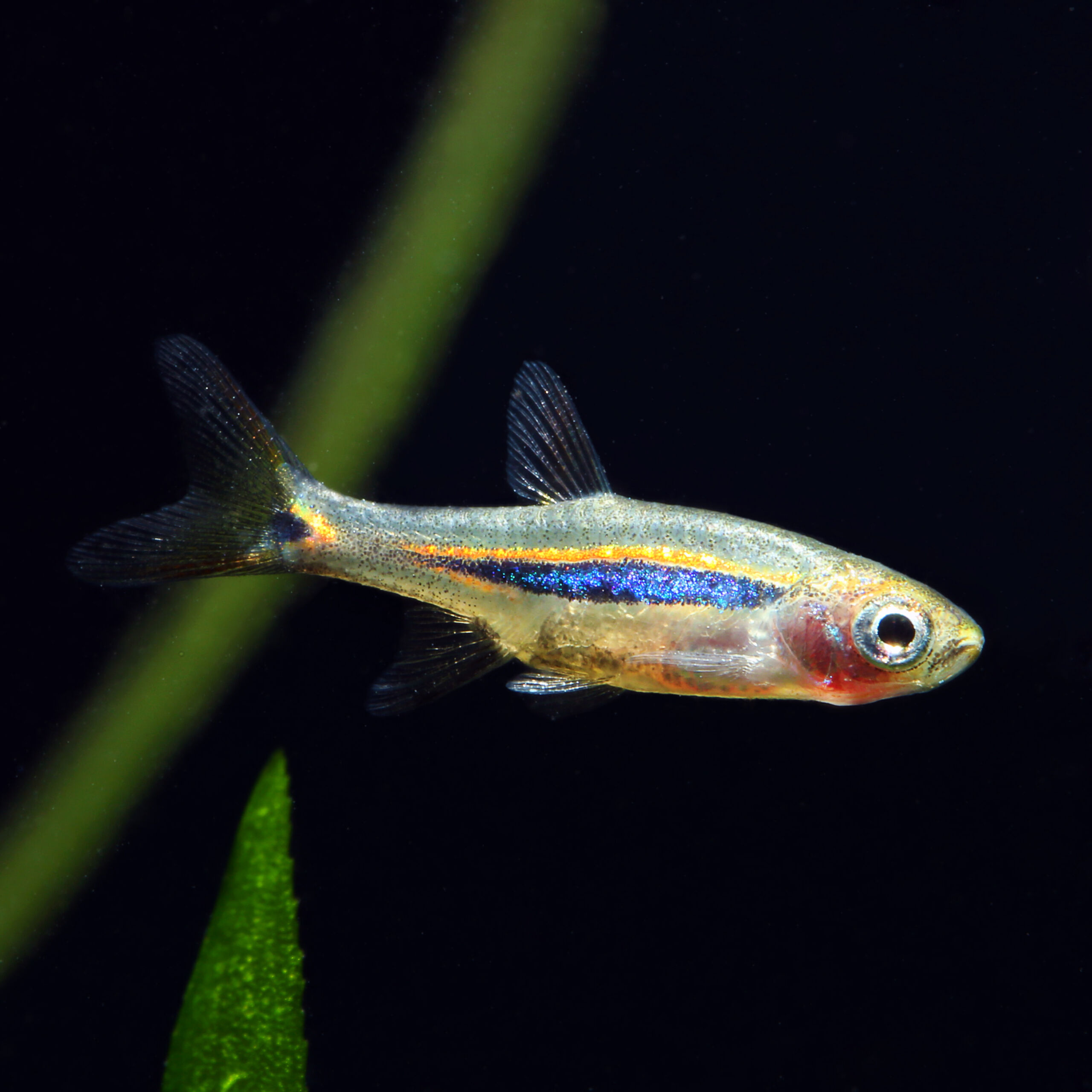Least Rasbora
Boraras urophthalmoides
The Least Rasbora is a very small and pretty schooling fish from Southeast Asia.
- peaceful schooling fish
- distinctive, iridescent longitudinal band
- one of the smalles aquarium fish
1 in stock
 Delivery in a few working days
Delivery in a few working days
 Free shipping from €60 across Austria
Free shipping from €60 across Austria





Important data
Product description & details
Boraras urophthalmoides, also known as Least Rasbora, comes from Southeast Asia, where it is primarily native to swamps and ponds that contain black water. This rasbora is one of the smallest aquarium fish and seldomly grows over 2cm in size. The characteristic dark longitudinal band running horizontally on the side of the body, which shimmers metallic blue in the light, is particularly pretty. In male animals there is another longitudinal band directly above it, which has an intense orange tone.
Care in the aquarium
It is possible to keep the Least Rasbora in an aquarium of 60 liters or more. This should have dense vegetation around the edges, which however leaves enough swimming space for this lively fish. Subdued lighting and a dark substrate not only ensure that the little rasboras feel safe, but also bring out the great coloring particularly well. As a schooling fish, it should also be kept with at least 10 members of its species. Soft to medium-hard (black) water rich in humic substances with a temperature between 23 and 26°C is optimal. This calm and extremely peaceful fish can easily be socialized with other peaceful, not too large fish and dwarf shrimps.
Feeding
Being omnivorous, Boraras urophthalmoides is not too picky. However, due to its small mouth, it can only be fed very small or fine types of food. Small frozen and live food such as newly hatched Artemia nauplii or copepods are preferred, but fine flake food is also accepted.
Sexual characteristics and breeding
Distinguishing the sexes of the Least Rasbora is not too difficult. The male differs from the female in its significantly stronger coloring and slightly slimmer body. In addition to the orange stripe above the dark longitudinal band typical of the species, males often have a bluish chest, sometimes red-orange colored fins and dorsal fins that are colored white at the front. Breeding the Least Rasbora in an aquarium is not that easy. Soft, acidic water is ideal. The addition of humic substances, for example in the form of sea almond tree leaves, walnut leaves or alder cones, also prevents the eggs from becoming fungal. The willingness to spawn can be increased by changing the water with cooler water and giving more live food. As free spawners, females prefer to release their eggs between fine-feathered plants, where they are fertilized by the male. There is no brood care and there is a risk that the parents will eat their own eggs, which is why there should be a spawning grid or, better yet, a separate breeding tank. The fish larvae, which hatch after about 24-36 hours, are very small and can be fed with dust food and infusoria.





